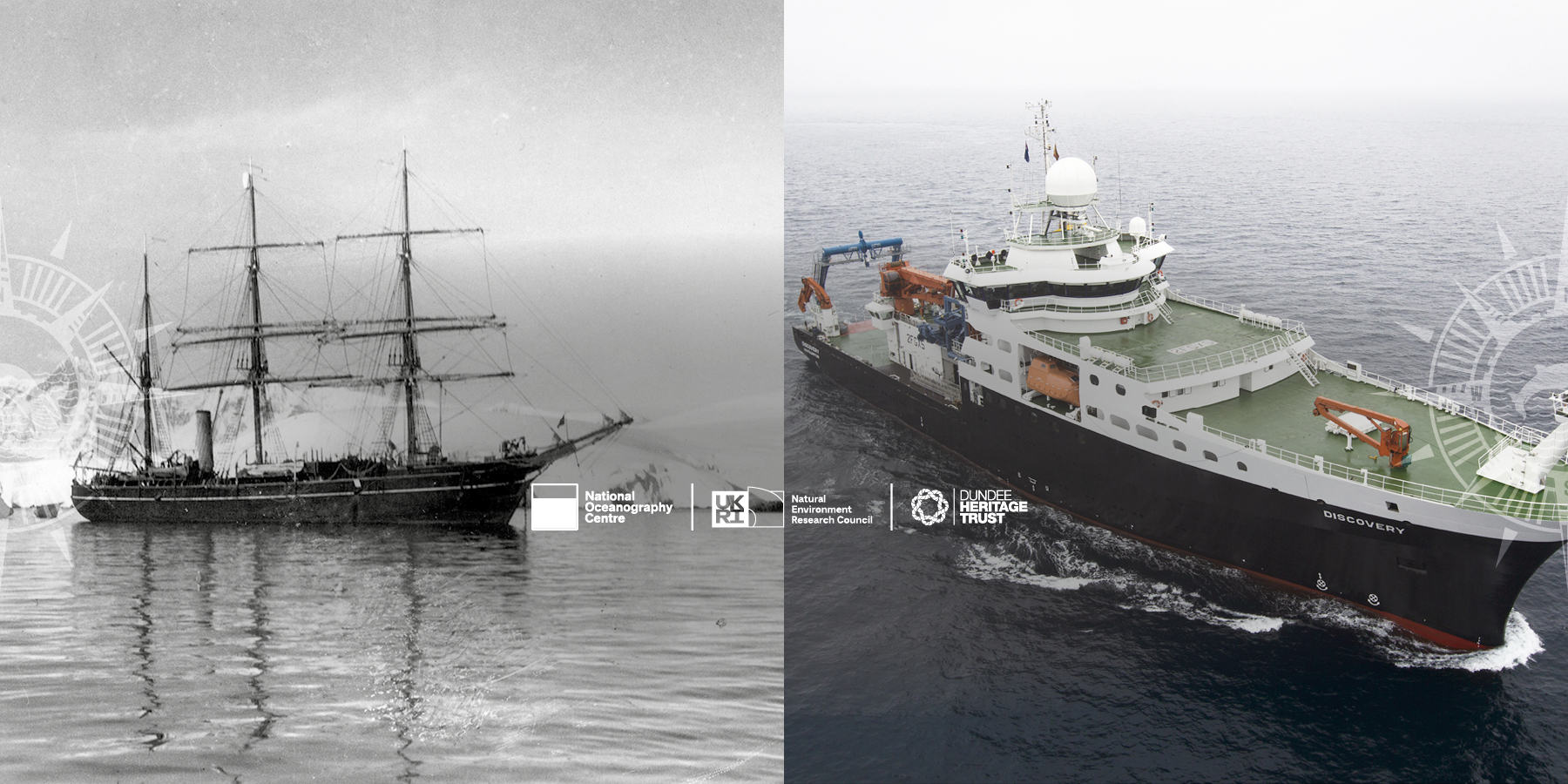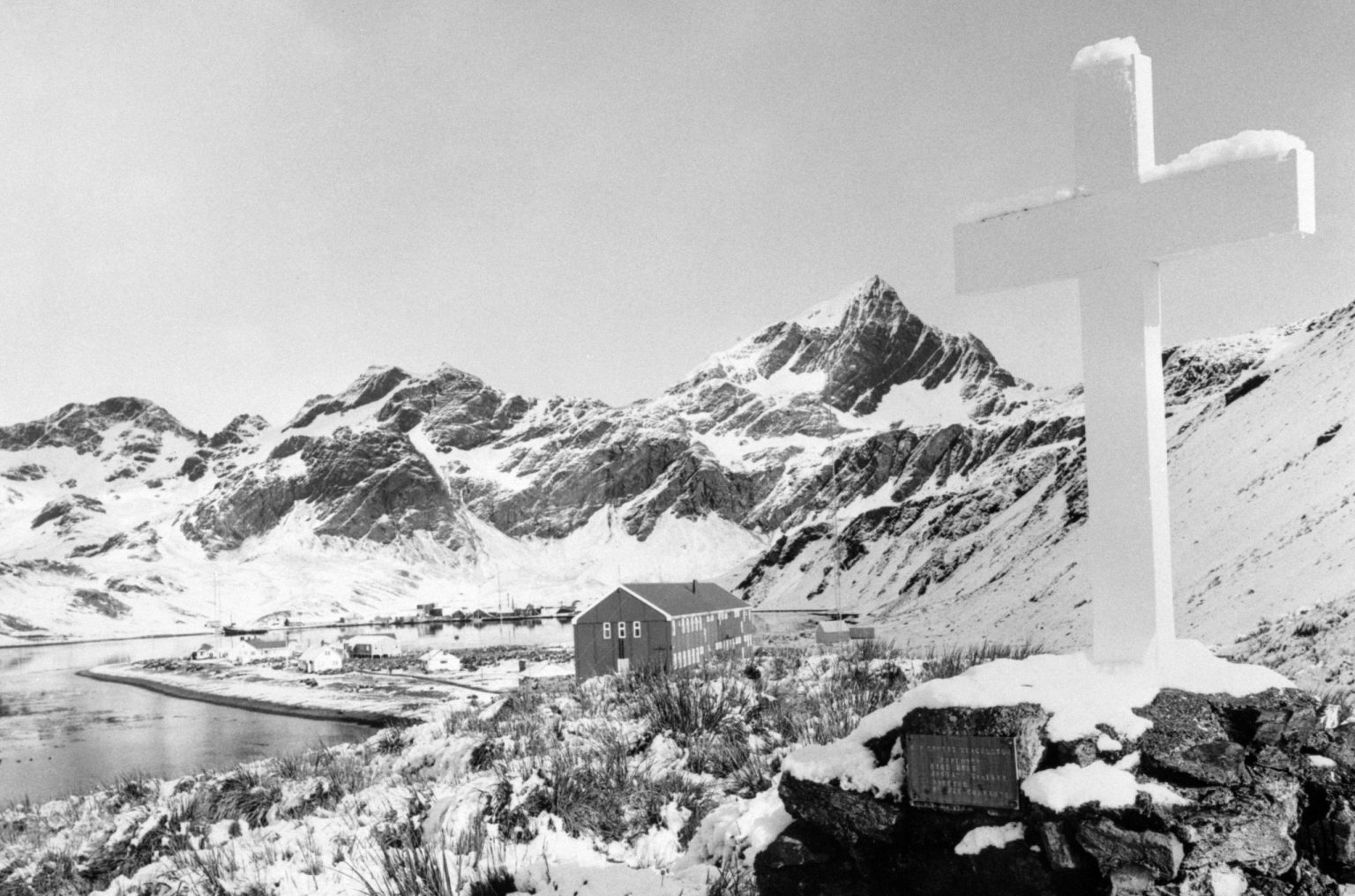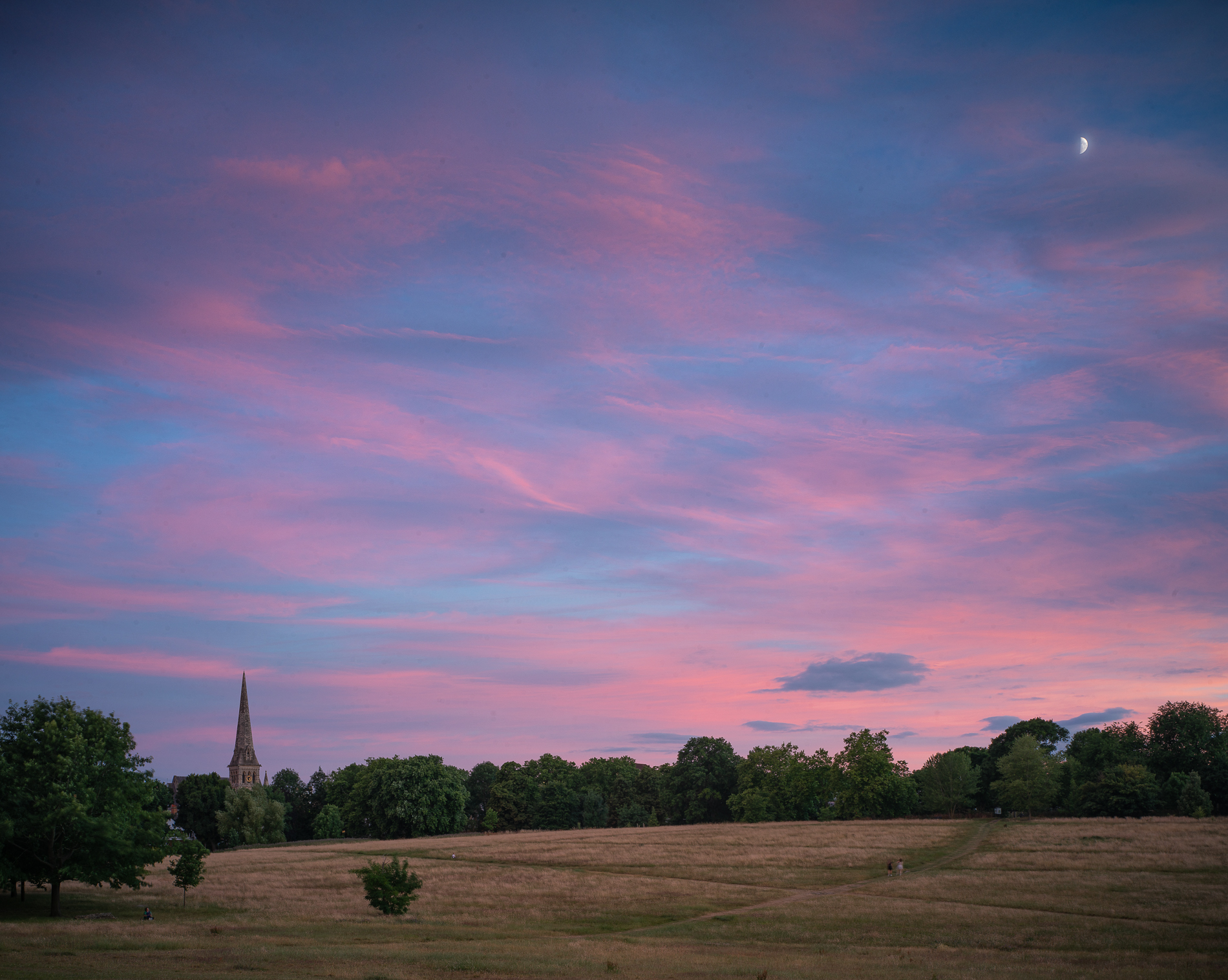
Interview: Max Rush
In the stillness of the High Mill at Verdant Works Museum lie a myriad of colours, creatures and landscapes from around the world, in International Garden Photographer of the Year (IGPOTY) Exhibition 18.
On display until 8 September 2025*, the Exhibition features a curated selection of awarded images from IGPOTY Competition 18; from mesmerising fungi, to peaceful portfolios of English country gardens, to orchids transformed into expressive characters.
At the forefront of the Exhibition, a striking orange sky looms over the glimmering walled garden in Brockwell Park, London. A documentation of a fleeting second between summer storms, the Overall Winner of IGPOTY Competition 18 captured by Max Rush – using a handmade wooden camera – bears stories and colours abound.

We were lucky enough to find out more from the photographer himself, in a conversation that spanned the power of parks in cities, the relationships between landscape photographers and nature, and Rush’s remarkable wooden camera, crafted from centuries-old wood salvaged from the largest of London’s Royal Parks.
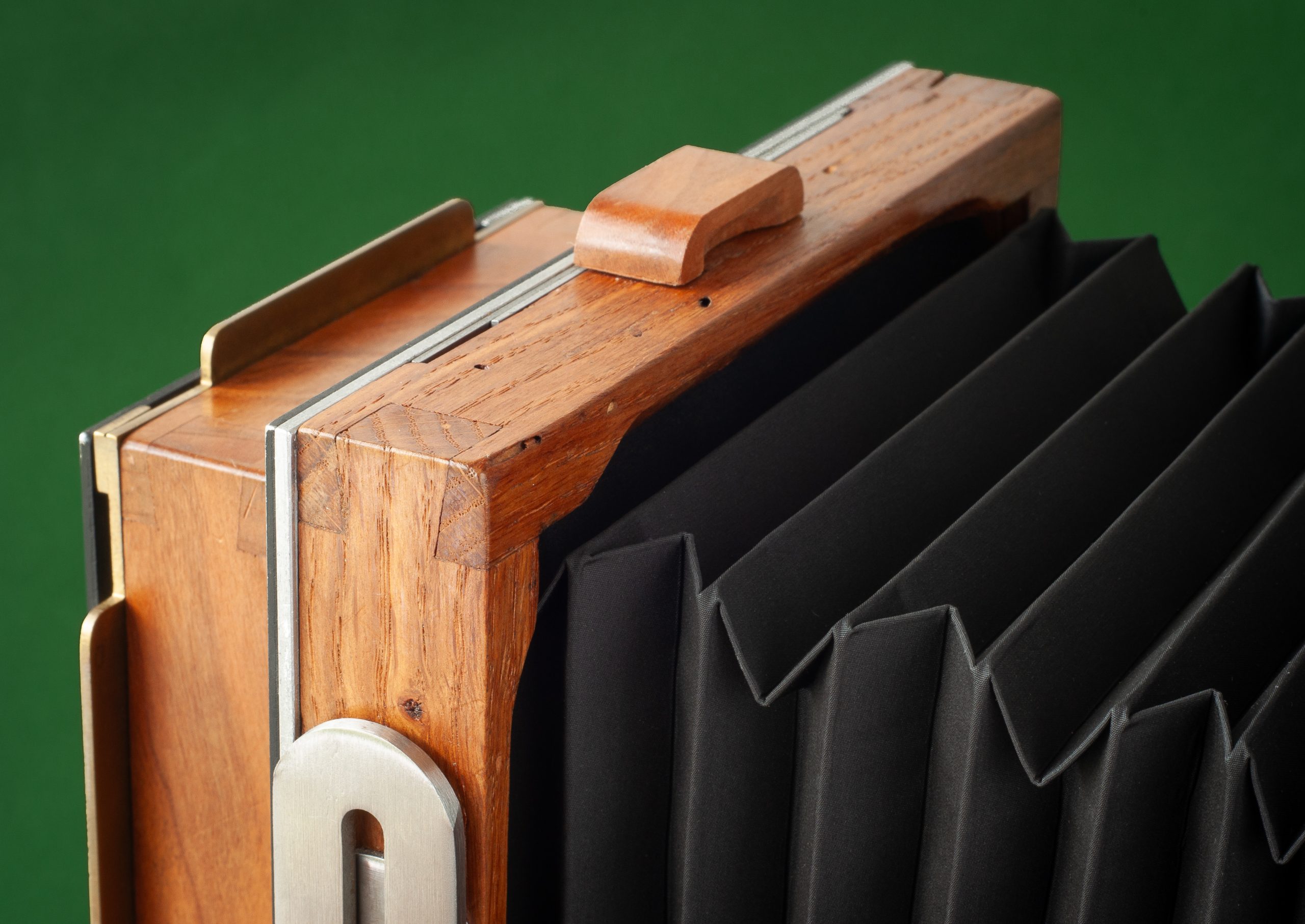
Hello Max, thank you for taking the time to speak with us today. Congratulations on your IGPOTY accolade; we would love to hear all about your wooden camera!
“I’ve made a lot of things in my life; I was constantly inventing things when I was younger, through woodwork and metalwork. I asked myself, “Why am I being restricted by what I can buy – why don’t I design a camera that can do everything that I want it to do?”
“I was already working with a wooden camera, doing large format film photography. It was a commercially made Chinese camera, and I just enjoyed working with a big camera – it feels much more like you’re working on some kind of canvas. It’s nice to be in control of all of the elements of photography.
“I could have made the camera out of plastic and metal, but I thought, actually there are bits of this that could be wood, and I like wooden cameras. I made a prototype camera out of floorboards that I found in a cupboard.
“I thought, “These floorboards are oak and I’m taking photographs of oak trees”, and one of the managers at Richmond Park – who is a friend of mine – saw me working with this camera. I didn’t think I could get hold of the Richmond Park wood, as it’s a Royal Park and a nature reserve, so I can’t just go and pick up the wood. But the manager said, “We can let you have some”.
“Then I made camera out of the Richmond Park wood and thought, “Has anybody ever made a camera out of the same thing that they’re photographing?”.”
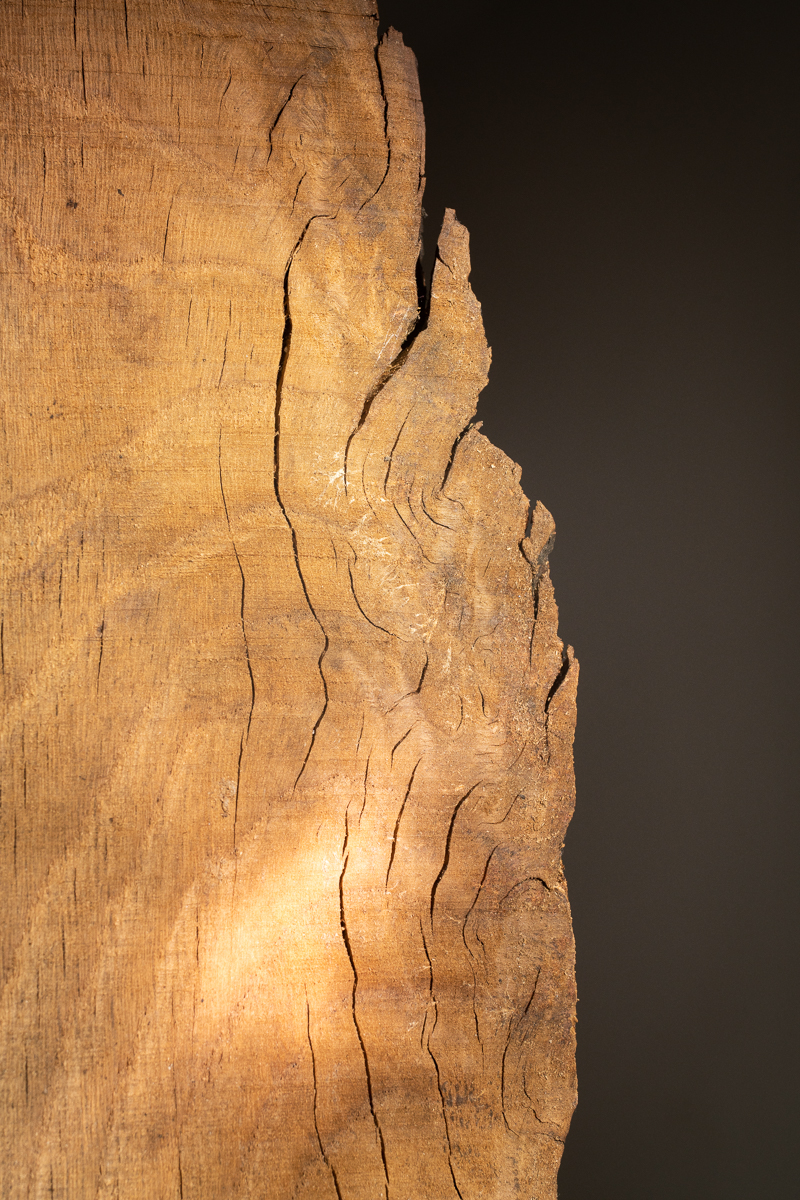
“I suddenly realised all of the different ways that you can look at that – the poetic connection that you feel with the subject; the fact that the wood itself is really a product of light; and all of the rings in the wood are these endless seasons going back into the past. I’m just trying to pick tiny little bits out of what is recorded in the wood.
“The other thing that really appeals with the age of these trees is thinking about the human and global history that has happened during the life of the tree. It’s something that’s much bigger than me, and it makes you feel a little bit humbled being in the presence of these trees.
“As you might have gathered, the final version of the camera – I say final, but obviously people never leave things alone – does actually incorporate wood from a living tree that I can go and photograph.
“I think as an idea, this is the one that’s captured peoples’ attention the most. If people pay attention to the project, and they’re engaged with it, then maybe I can use the wooden camera for good and say something useful about the value of the trees – which is what it all comes down to.
“‘Circle of Light’ is the name of the concept, from the idea that the wood has come back to the place and is showing the very process that created it, which is sunlight on leaves. I’m quite excited about doing more with it than that, because in Richmond Park you see so many elements of the natural world that are really compelling and beautiful, beyond just the bio-diversity. If I can incorporate the oak tree, that links everything together.”
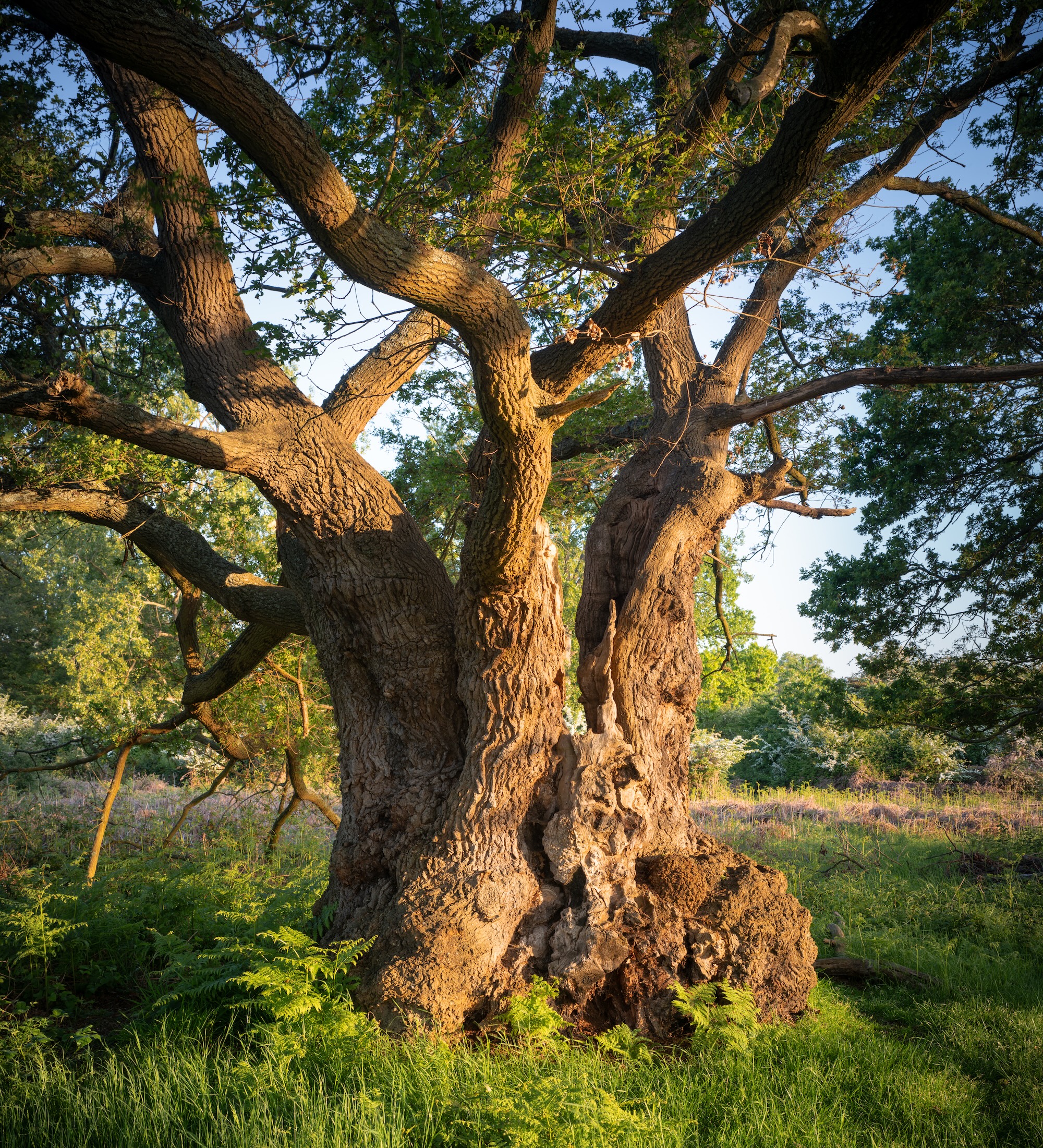
That’s really fascinating. We rarely think of London as somewhere with so many parks and nature – what is it like, undertaking projects revolving around natural landscapes in a city that is so often associated with the very opposite of that?
“On the average London street, you might not be aware that there is a huge park next to you, but some of the green spaces actually really dominate the city.
“A couple of days ago in my neighbourhood, I suddenly discovered an orange tree – it was bigger than any other orange tree I’d seen. London is not only a green place; there are parts of that feel close to continental Europe now.
“A lot of photographers of nature have a relationship with the wilderness. Sometimes the wilderness is the only thing you can see, or the only thing you would aspire to take pictures of, because it’s the only ‘perfect’ thing. I lost that almost by accident, just by going out into the park in the winter and seeing the place covered in snow – suddenly, it was a little bit closer to this idea of… you shouldn’t say perfect, but you know what I mean. This idea that however close you look, you’re looking at nature and not humanity. I realised that the London landscape could in fact look like that, if you are careful with what direction you look in.”
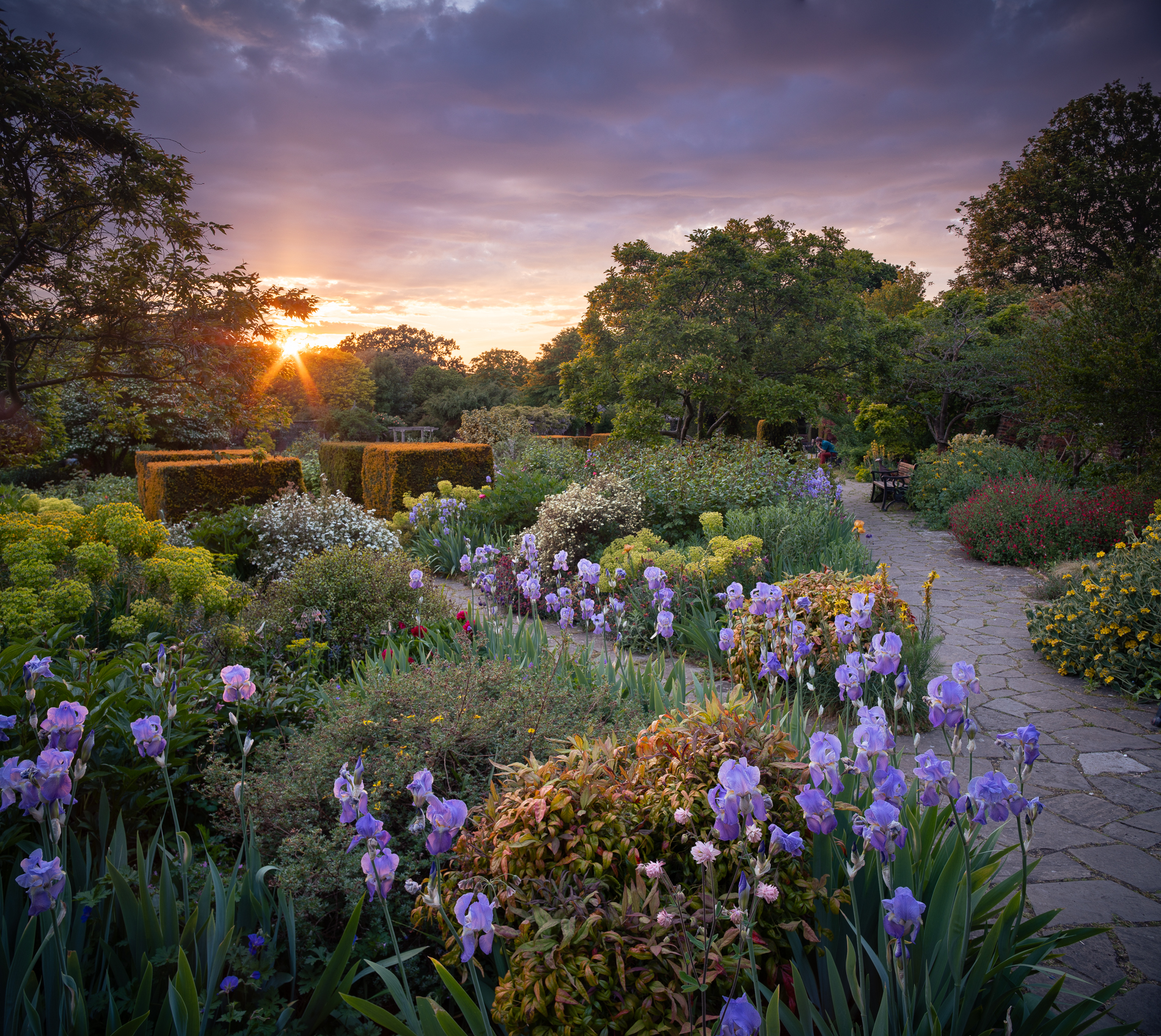
“I always thought that part of my job ought to be to show people what happens in the early hours (the most beautiful conditions you could possibly find), assuming that most people won’t be out there in the park at that moment. Taking pictures in the rain, or at 4 o’clock in the morning in summer – somebody has to go and do that. You get to share that with everybody else and bring the sense of surprise, “Oh my God, this is what happens in my neighbourhood”.
“Parks in London are peoples’ back gardens essentially, as not everyone in London has a garden. If the park is the best you’ve got, it really means a lot to you.
“When you look at the way local people use the park, they have a sort of country air about them. People are out in the early morning frost, walking their dogs; some of them even dress for the country. They’re confidently striding through the wilderness even though it’s just metres from their house – they’re using nature just as you would in the countryside.”

Your winning IGPOTY image, Spectacle of the Painted Storm is a wonderful example of the result of that sense of duty you describe in wanting to show people the natural phenomena that happen within their local park. Can you take us back to that scene and the moment of capturing it?
“When you do landscape photography and get yourself into the position of seeing amazing things in nature, you sometimes get a sense that nature doesn’t want you to take a good photograph.
“Amazing moments often come along with things that are trying to get in the way of your photograph; like water. One drip of water on the camera lens will be very obvious in the picture, and you don’t want that. Sometimes it’s coming from all directions and blowing around, or, the lighting is changing extremely quickly.
“This image has the extra element of rain lashing and wind. I was trying to hold an umbrella, too, so this was a one-handed photograph.”
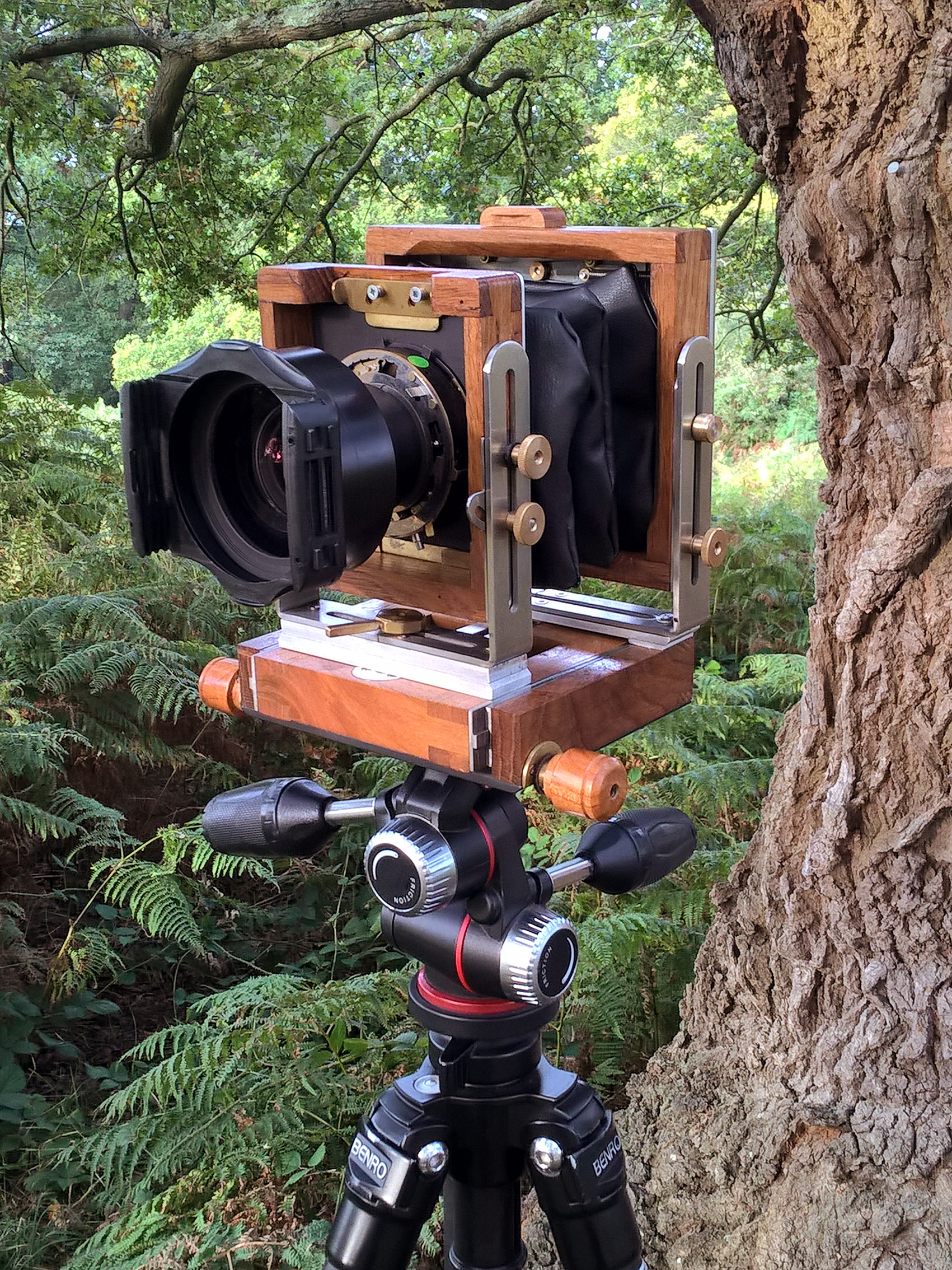
“The basic setup [in ‘Spectacle of the Painted Storm’], which I’ve always been excited by – because I’ve seen hints of it before, and I think it is maybe one of the most spectacular things that you could see – is the moment when you get a really dark storm passing over at sunset, and there’s a little gap in the sky. The sun appears below the storm clouds and lights the underneath of the clouds, which is where the orange comes from. If the rain is falling at the same time, you’ve got a polished landscape and everything is shiny with a low light to reflect off.
“In the walled garden at Brockwell Park, the paths are all stone and the light reflects off of them very well when they’re wet. The falling water itself is a filter, and it reddens the light. It is in fact, the same process that would mean if I had looked behind myself when I was taking that photograph, I would have probably seen quite a good rainbow.
“The slightly bizarre thing is that I wasn’t supposed to be in the walled garden [at that time] at all. It felt like a very strange combination of events, just to be allowed to be there.
“I can’t take credit for the garden, though. I do know the gardeners at Brockwell Park, they’re friends of mine and I think they should have a lot of credit for this photograph, in creating the garden in the first place.”

The photograph is truly beautiful, and it’s proving popular with our visitors here at Verdant Works Museum! What do you hope that people feel when they see it in IGPOTY Exhibition 18?
“I know I can’t control what everybody feels about the picture, and that’s the great thing about art. There are two different avenues to go down there. I think there’s the avenue of:
- This is an amazing thing that nature has done. If that’s the way you enjoy the picture, a very unlikely moment in time, picked from many more mundane moments, this was just something that we were privileged enough to see together, and we can enjoy that.
- If you go down the route of asking ‘how did this all happen’ and learning that the camera was made from an oak tree, then I hope it does really share the idea of protecting oak trees.
“It automatically leads you to a greater appreciation of the landscapes we have and conservation in general.
“That’s just one little step towards us thinking more about how precious the natural world is.”
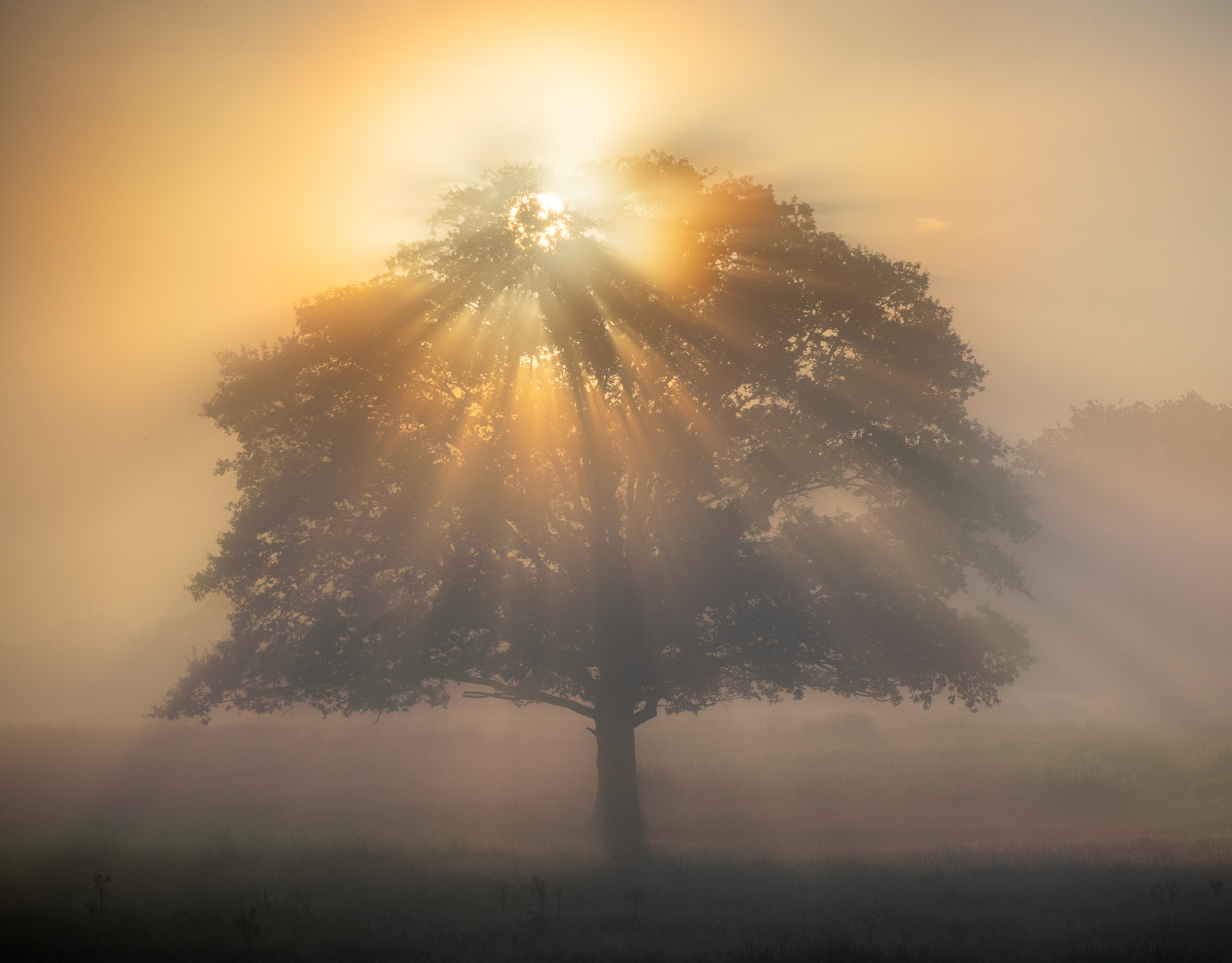
Spectacle of the Painted Storm is on show as part of IGPOTY Exhibition 18 alongside Dundee’s Heritage and Nature Exhibition at Verdant Works Museum until 8 September 2025*. Exhibition entry is included in museum admission; save when you book online.
With thanks to Max Rush and International Garden Photographer of the Year.
*Verdant Works Museum is closed on 6 September 2025.
-
Museum admission15th Apr – 8th Sep 2025Verdant Works Museum
Exhibition: International Garden Photographer of the Year Exhibition 18
Breathtaking photography from around the world shown in Dundee, in the latest International Garden Photographer of the Year Exhibition. -
Museum admission15th Apr – 8th Sep 2025Verdant Works Museum
Exhibition: Dundee’s Heritage and Nature
Dundee photography exhibition showcasing scenes of heritage and nature in the city of Discovery. -
Museum admission9th May – 14th Oct 2025Verdant Works Museum
Exhibition: Abstract Water
Photography exhibition by Abi Warner, capturing the abstract forms of water and ice through painterly photographs.
Keep in touch!
You’ll receive exclusive insights into our work behind-the-scenes at Discovery Point and Verdant Works Museum, be first to know about upcoming events and exhibitions and, discover how you can help support Dundee Heritage Trust. You can unsubscribe at any time.




